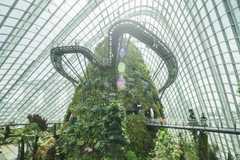Parks & recreation / Global
Play grounds
The role of parks and other green urban spaces as quality-of-life improvers cannot be underestimated. Monocle takes a leafy stroll.
01
Gardens by the Bay
Singapore
Fifty years ago, Singapore’s then prime minister, Lee Kuan Yew, planted a mempat sapling in a traffic circle as the first step towards his vision of creating a “Garden City”. Little could he have known the initiative would one day sprout 16-storey structures that rise out of the S$1bn (€613m) Gardens by the Bay like an imposing steel rainforest from the future.
Sitting on 101 hectares of reclaimed land between the city centre and the Singapore Strait, Gardens by the Bay is as much an engineering and architectural feat as a pleasant green space to enjoy an orchestral concert after work. When the city decided to devote the land to gardens in 2004, it wanted a park that would feel instantly connected to the city and become a natural gathering place for locals.
“The idea was that this garden would be to Singapore what Central Park is to New York,” says Kenneth Er, the park’s chief operating officer. The biggest challenge, he says, was to attract people who wouldn’t normally go to a botanical garden. “We felt it was important, as you come into this garden, that it must ‘wow’ you.” And so it does. There are more than a million plants in the garden and the park is also leading the way on the environmental sustainability front. The park’s biomes (ecologically distinct habitats), for example, are cooled using energy generated from a furnace burning horticultural waste, while the Supertrees harness solar energy, collect rainwater that feeds into the park’s irrigation system and vent hot air from the biomes through an underground exhaust system.
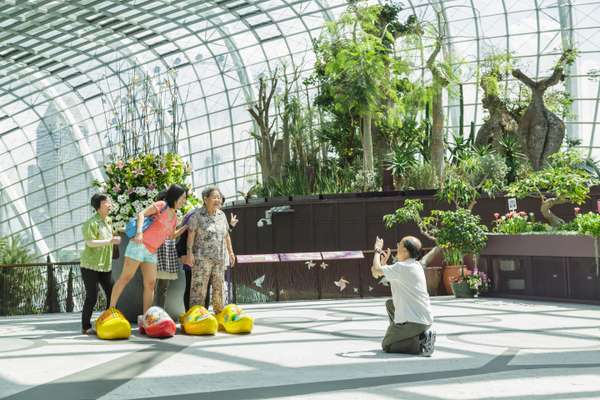
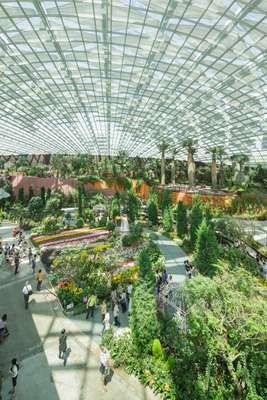






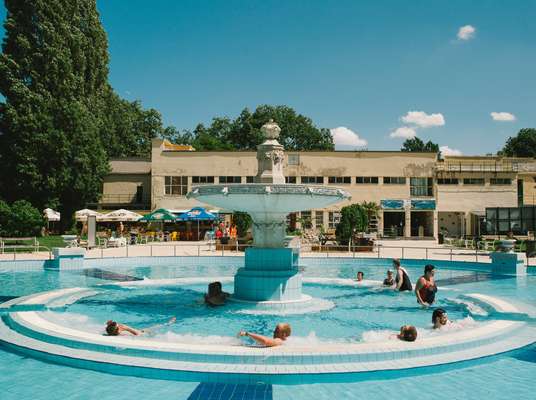
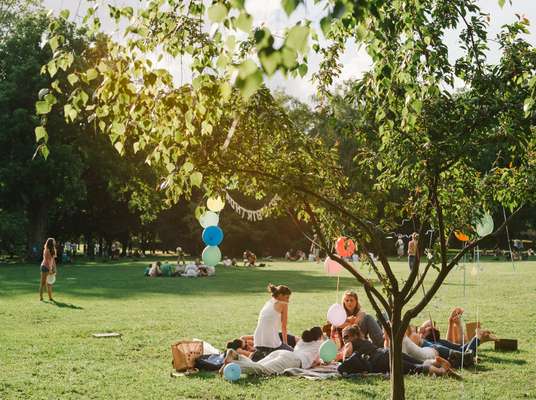
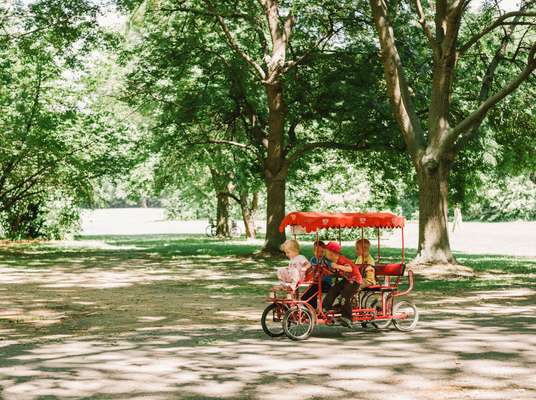




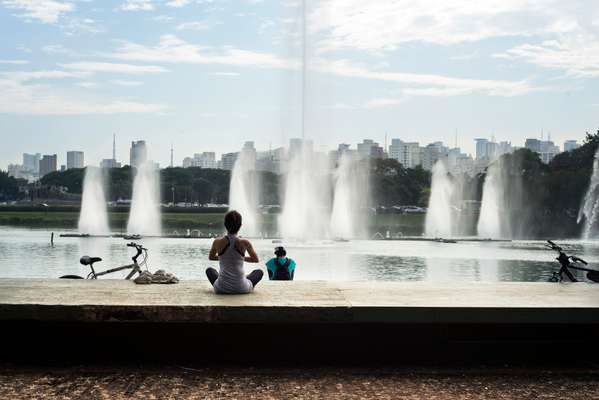

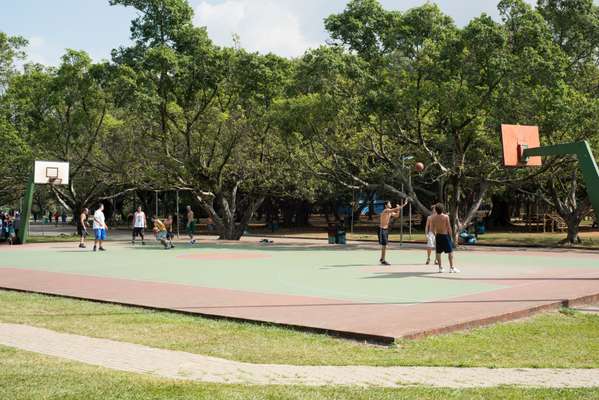
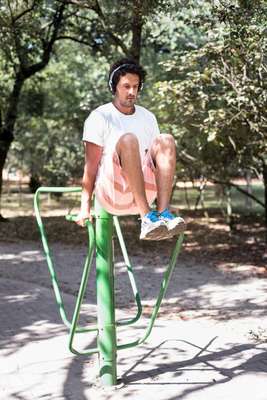
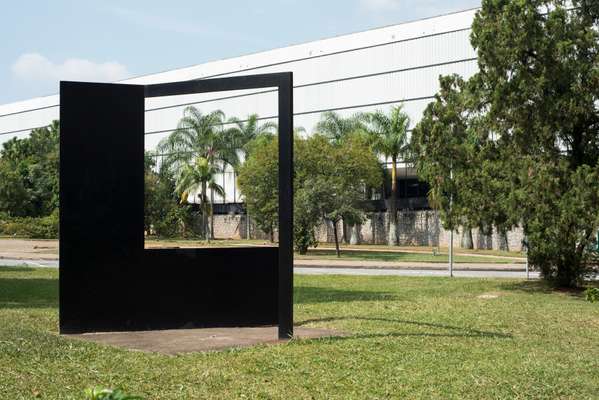
The Supertrees and the two giant flower biomes are part of the master plan conceived by the British architecture firm Wilkinson Eyre and the landscape architects Grant Associates, which won an international competition in 2006 to build Gardens by the Bay. The Supertrees provide a startling visual impact (they’re inspired by the magical jungles in the Japanese animated film Princess Mononoke), while the cooled conservatories contain an impressive 217,000 plants in two distinct climates — the dry Mediterranean “Flower Dome” and the misty, cooler tropical highlands in the “Cloud Forest”, which also has a 30-metre waterfall.
To encourage locals to visit, the park doesn’t charge admission for the outside gardens and there’s an annual pass for residents to visit the biomes. The park is open early in the morning (05.00) and closes late at night (02.00). Educational tours are offered for school groups and special attention has been paid to helping the elderly get around – even the 22-metre-high skyway connecting the Supertrees is wheelchair accessible.
Er says the gardens have attracted 4.5 million visitors since opening last July, of which about 60 per cent are locals. “It’s a space that energises the city,” he says. “Hopefully, it will become entrenched as part of Singapore.”
Highlights
Exercise
There’s a promenade on the edge of the park that’s popular with runners and cyclists. The park also held a 10km “Garden Run” last year, and is now on the Singapore Marathon route.
Food and drink
British chef Jason Atherton has opened Pollen, an offshoot of his Michelin-starred London restaurant Pollen Street Social, inside the “Flower Dome”. For Singaporean fare, Satay by the Bay is a hawker-style food court serving BBQ seafood, chicken rice and, naturally, satays of every stripe.
Activities
The gardens have two venues for open-air concerts. A large meadow can accommodate up to 25,000 people for major shows (Psy and Aerosmith performed in May) and the grove surrounding the main Supertree cluster hosts regular orchestral performances. There’s a Supertree light and sound show twice a night, as well.
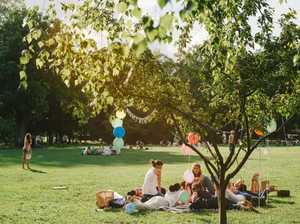
02
Margaret Island
Budapest
Between the shores of Buda and Pest, where the Danube River runs through the Hungarian capital, the 2.5km-long, 500 metres wide Margaret Island has been acting as green lungs for the city since the 13th century.
The oldest remaining structure on the 91-hectare island is a monastery King Bela IV built, where his daughter Princess Margaret and 12 nuns lived. Today it’s a popular space, big enough to host up to 150,000 visitors on a weekend. Cars are prohibited so visitors arrive either by cycling, on foot or on public transport: the new Danube commuter boats make a stop here and so does the historic 4-6 tram.
The most popular attraction is the tree-lined running track around the island, which is exactly 5,350 metres (one eighth of a marathon) and is marked every 500 metres. After finishing the run, the athletes are seen stretching or resting on one of the 550 benches scattered around the park.
The island also boasts a variety of other sport and leisure complexes including tennis and squash courts and the Palatinus public baths, complete with beach, and indoor and outdoor pools. The most important of these is the Hajos Alfred National Swimming Pool complex. Built in 1930 and refurbished in the early 2000s, it has six pools that have been used to train generations of Hungary’s water polo Olympic stars and other less competitive locals.
The island also brings in the masses at night, whether it’s to the Holdudvar restaurant or the open-air cinema. For Krisztina Erdelyi, part of Fokert, the management company in charge of the island’s preservation, one of the biggest challenges is to turn Margaret Island into a national landmark. She believes that employing local volunteers and student groups on top of the fluctuating workforce of about 20 to 25 people has helped with the upkeep and has significantly reduced littering – a problem around Hungary’s cities and public parks. “We want the Island to become the shining example of how much can be achieved by engaging with our local communities,” she says. “This will leave its mark for generations to come.”
Highlights
Exercise
There’s a 5,350-metre running track that goes around the perimeter of the Island. There are also12 pools and a number of tennis, squash and basketball courts as well as a football pitch (and plenty of grass to perch on).
Food and drink
One of the most popular nightclubs and versatile venues in Budapest, Holdudvar, is located in a beautiful 19th-century building that used to host the casino on the Island. It now also operates a restaurant, bar, gallery and open-air cinema. There is also the Sziget Klub Terasz and Chachacha, where you see a mixed crowd of Budapesters.
Activities
The Open Air theatre and the Budapest Summer Festival celebrate their 75th anniversaries this year. With a capacity of 3,000 it holds performances throughout the spring and summer, including opera, classical ballet and rock concerts.
Hotels
If you who want to experience a different side to the city you can choose to stay here. The two hotels, the Thermal Hotel and the Grand Hotel Margitsziget, are a short walk from everything you need.

03
Ibirapuera Park
São Paulo
There are few parks that were born on the drawing boards of a world-renowned architect. Luckily for Paulistanos, who have access to more than 100 parks spread across São Paulo, the Ibirapuera park was designed by the late Oscar Niemeyer and opened in 1954 on the occasion of the city’s fourth centenary.
“The park has a privileged location because it’s in the heart of São Paulo,” says the entrepreneur João Pedro Barbosa, a 36-year-old who visits the park “at least three times a week for cycling”. In an area of 1,500 sq km, locals have at their disposal 1.5km of jogging trails, 3km of bike paths and 500 bicycles available for rent, sports courts and an outdoor fitness centre, every day from 05.00 to midnight. “I also like it there because of the amount of trees and the feeling of security, even at night,” adds Barbosa, one of the 20,000 people who go to Ibirapuera from Monday through Friday; on weekends this number jumps to 80,000 on Saturday and 150,000 on Sunday.
But it is not only because of the sports courts and picnic spaces that locals of all ages and social classes go to Ibirapuera; it’s also for culture. The park has some of the most respected art spaces and performance stages in Brazil, including the Museum of Modern Art (MAM) and the Auditório Ibirapuera, a building shaped like a trapezoid that has a vivid red “tongue” rolling out of the main entrance. Opened in 2005 after a series of disagreements between Niemeyer and the park authorities, who wanted to change the original design, the auditorium seats 800 people who come for year-round music, theatre and dance performances. In the basement there’s a music school where 170 students (most of them from poor areas of São Paulo) come for lessons and dream of playing at one of the park’s open-air concerts. There’s a cinema screen, an animal sanctuary and a planetarium. Under a canopy that connects the Museu Afro Brasil, the Pavilhão das Culturas and the Bienal Foundation, skateboarders and inline skaters whizz round the 620-metre-long concrete floor.
The name Ibirapuera means “rotten wood” in the local tupi-guaraní dialect, appropriate for what was once a swampy region. It was drained and various species of trees planted in the 1920s as part of a project led by Manoel de Oliveira Lopes, fondly known as Manequinho. His legacy remains in a corner of the park at the Viveiro Manequinho Lopes, a nursery where plants are grown to be planted all over São Paulo.
This is the favourite place for those seeking a moment of repose, and a rare tranquil spot in a city of 11 million inhabitants.
Highlights
Exercise
After a day’s work, Ibirapuera turns into a meeting ground for joggers, cyclists, rollerbladers and skateboarders who tend to linger until midnight, when the park closes. There are seven multi-sport courts, 1.5km of jogging tracks and 3km of bike paths. Visitors can rent one of the 500 bicycles available.
What to do
For those who love art, the Ibirapuera park offers a feast. It houses the Museum of Modern Art, the Afro Brasil Museum, the OCA, the Museum of Contemporary Art, the Biennial and the Pavilion of Brazilian Cultures. There are also sculptures by the great names of contemporary art in the garden in front of the MAM. And two monuments deserve special attention: the Monumento às Bandeiras, a sculpture by Victor Brecheret, and the Obelisk, symbol of the Constitutionalist Revolution of 1932. At 72 metres, the latter is the tallest monument in the city.
Why do we like it?
The park serves as an escape for a moment of peace and reflection. It’s also a democratic place – where people of all ages and social classes co-exist.

